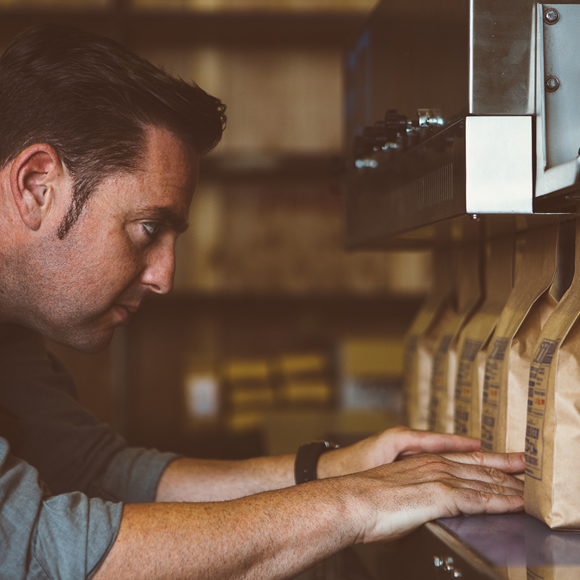No two insurance policies are the same. It is important to fully understand the different aspects of the policy arranged to protect your business.

COMMERCIAL INSURANCE OVERVIEW
Your policy will undoubtedly carry conditions and warranties, either as part of the standard policy wording or added by underwriters through endorsement, depending on the nature of your business activities. This can vary between insurers.
Common conditions might include meeting minimum levels of security, or maintaining current certification for the property’s electrical installation. Compliance with these conditions and warranties is critical to the effective operation of your policy cover. Failure to comply may impact your position in the event of a claim.
Here we explain some of the more common policies which may be included in your insurance program.
MATERIAL DAMAGE
This is designed to protect your business assets – such as buildings, machinery, stock, computer equipment and office contents – against fire, flood, storm, theft and accidental damage.
Traditional policies will specify the perils against which protection is provided, but cover is now more commonly provided on a “commercial all risks basis”.
With regard to buildings cover, cover for theft and subsidence are not always provided as standard so your policy should be checked to ensure these are included, particularly with the recent increase in the theft of lead and other metals from buildings.


SUMS INSURED & AVERAGE
The intention of your policy is to put you back in your pre-loss position after a claim.
As such, buildings should always be insured for the cost of a full rebuild, with appropriate allowance for debris removal and professional fees.
Other business assets should be insured for replacement cost, which will generally be for “replacement as new” unless there is a reliable and regular market for suitable reconditioned replacement machinery.
Stock should be valued on the traditional accounting basis of the lower of cost or net realisable value. The stock sum insured should allow for the maximum stock level at any point during the period of cover. Where stock levels are likely to fluctuate significantly, an adjustable sum insured based on monthly or quarterly declarations may provide a cost effective solution.
In the event of a claim the insurance company will assess the adequacy of the sums insured and, if these are considered inadequate, the principle of “average” will apply. The claim settlement will then be reduced in direct proportion to the assessed level of underinsurance.
POLICY EXTENSIONS
The material damage section of your policy may include a number of useful extensions in cover.
Trace & Access – to determine the source and cause of an underground leak of oil or water
Deterioration of Stock – in the event of failure of refrigerated equipment
Items Stored in the Open – if you store goods within a yard which otherwise would be excluded from your policy cover
Third Party Goods Held in Trust – where you hold goods belonging to customers
You should also check your policy for exclusions which apply. This is likely to include for example an exclusion for theft cover which is not the subject of forcible and violent entry to the business premises.


BUSINESS INTERRUPTION
Often the most significant loss a business suffers following a claim is the impact on its ongoing trading position. Statistics show that businesses often fail to recover from a significant insurance loss directly as a result of inadequate Business Interruption cover.
A business interruption review should therefore be an important part of your disaster recovery plan.
Basis of Cover
A business should insure for Gross Profit calculated on the basis of sales, less direct material costs. Direct labour should not be deducted as this will ensure direct employees continue to be paid during the period of loss. It will also mean that the business has a workforce ready to re-commence as soon as the business infrastructure has been restored.
With professional businesses, cover should be on the basis of Gross Fees.
Where business activities are carried out away from the company’s premises, a significant claim at the place of business may not impact the business’s ability to trade with its customers, e.g. in the construction sector. In such cases a more cost-effective solution can be to arrange cover on the basis of the likely increased costs of working.
Indemnity Period
Business Interruption insurance should allow sufficient time to enable a business to return not just to the point where it is trading, but to the point where it is back trading at its pre-loss level. Selection of an adequate indemnity period is therefore important. The following factors should be considered:
- Does the business have any specialist machinery where there may be a lengthy lead time on replacement?
- Is there likely to be any issue or delay with planning or building control approval where buildings require to be rebuilt?
- How quickly will the business be able to recover lost customers who may seek alternative suppliers whilst the business is recovering from the loss?
Extensions
There are a number of extensions which are available to standard Business Interruption cover. Some of the more common extensions include:
Denial of Access – this provides cover where you are denied access to your premises e.g. as a result of road closure following an incident at a nearby property.
Loss of Utilities – this provides cover where the business is impacted by a failure in the supply of gas, electricity, telecoms etc.
Customer or Supplier Extension – where the business is dependent on a significant customer of supplier, and trading would be impacted following an incident at that company’s premises, this extension would provide cover.


LIABILITY
This cover is designed to protect a business against claims intimated by a party who has suffered injury or damage as a direct result of its negligence.
A liability policy will respond to claims arising from incidents which occurred during the period of cover even the claim arises after the period of cover has expired.
Liability cover can include:
Employers Liability – this protects a business against any claim intimated by an employee injured during the course of their employment. It is a legal requirement for all businesses that employ staff to carry Employers Liability insurance and the certificate must be displayed at the business premises.
For the purposes of this cover, labour-only subcontractors, casual staff or volunteers will be considered as employees.
Public Liability – similarly, this protects a business against any claim intimated by a third party. This can be in relation to the company’s activities or the maintenance of its business premises.
Products Liability – this protection is in response to claims from a third party who has suffered injury or damage as a result of products the business has supplied, whether that person is a direct customer of the business or not.
Extensions
Liability cover can be extended to include a financial loss suffered by a third party, even though no direct injury or damage has been suffered.
In the construction sector, a JCT 6.5.1 extension will provide indemnity for injury of damage arising even if it could not be proven that the business had been negligent. This cover is often a requirement of the contractual conditions applying.
Policy Conditions
The policy wording and current schedule should be checked carefully for conditions applying which will be fundamental to the operation of cover. For example, where hot work is undertaken away from the business premises there will be a requirement to follow stated precautionary procedures.


PROFESSIONAL INDEMNITY
This cover will protect your business in respect of claims arising from defective design, negligent advice or any error, omission or loss or breach of confidential information.
This cover is a professional requirement for solicitors, accountants, architects, surveyors and other professional consultants. Increasingly, companies involved in the construction sector are required by their customers to carry “design and construct” professional indemnity cover.
As with liability cover, the policy will extend to include the costs of legal representation in defending any claim intimated.
Unlike liability cover, the Professional Indemnity policy which would respond to a claim is that in force at the point the claim is intimated, and not the policy in force at the point the incident occurred.
DIRECTORS & OFFICERS
A Directors & Officers policy provides financial protection for directors or managers against the consequences of actual or alleged “wrongful acts” when acting in the scope of their managerial or statutory duties.
The increasingly litigious nature of society and the ever-evolving legal environment make this cover an increasingly important part of a company’s overall insurance portfolio.


CONTRACT WORKS
Contract Works insurance covers construction work in progress from the perils of fire, flood, storm, malicious damage and theft.
Where the work involves an extension to an existing facility, the owner will generally insure the “existing structures”, the new works and any related materials on site under the contract works policy. The policy can also extend to include materials allocated to a specific contract but held at the business’s own premises or in transit to site.
Extensions
A contract works policy has a number of commonly available extensions:
- Own or hired in plant
- Tools and equipment belonging to the company or its employees
- Temporary site accommodation
GOODS IN TRANSIT
Goods In Transit insurance can cover both incoming and outgoing goods, either belonging to a company itself or for a haulier delivering goods on behalf of a third party.
Own goods cover can protect goods being delivered in a business’s own vehicles, by a third party haulier or sent by courier or post.
Goods In Transit cover for a haulier involves protection of goods owned by third parties. It is not uncommon for hauliers to be unaware of the exact nature of the goods being carried. Standard policies will therefore carry a list of excluded goods and the limits of cover are generally determined by the contractual conditions under which the haulier operates, with Road Haulage Association (RHA) cover at £1,300 per tonne of Freight Transport Association (FTA) cover at £2,000 per tonne.
Extensions
Cover can be extended where specified customers request a higher limit. The policy can also be extended to a full all risks basis of cover. Higher limits can also be provided for the carriage of wines and spirits, either bulk or bottled, and specific categories of hazardous goods. Additional policy conditions will apply when these extensions are added.
Policies, subject to certain conditions, can be extended to cover chilled or frozen food damaged as a result of the failure of the refrigeration equipment.


